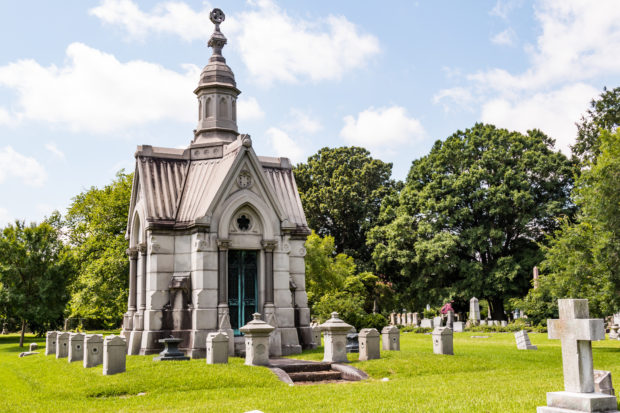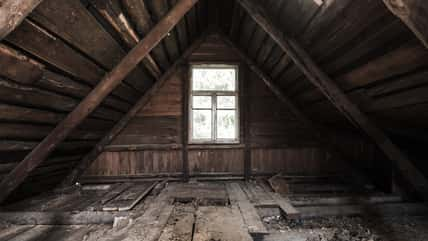During The 19th Century, Dining Amongst The Dead In Cemeteries Was A Common American Pastime

Nowadays, you would probably be hard-pressed to find someone who genuinely enjoys spending alone time in cemeteries.
I mean, these resting sites have been dubbed some of the most unsettling and creepiest places in popular media, and most people only visit them to see a passed loved one.
But, not that long ago, American cemeteries were actually one of the most favored picnic spots.
This trend started during the nineteenth century and quickly spread throughout the entirety of the United States. And interestingly, the practice sparked out of necessity.
At the time, most municipalities still did not have proper recreational areas where friends and families alike could go to enjoy some fresh air or eat a meal. So, many people took to their local cemeteries to break bread.
If you are imagining people bringing along a few fruits or a cheese and cracker spread, though, you are wildly underestimating these picnics of the past. Instead, people would actually go all out and bring full-blown meals with them.
In New York, for example, city dwellers would often visit Saint Paul’s Churchyard located in Lower Manhattan and bring along baskets packed with beef sandwiches, ginger snaps, and fruits.
And in Ohio, community members would show up to the Woodland Cemetry in Dayton via horsedrawn carriage. Then, they would don parasols and promenade through the property before sitting down to feast.
Aside from the sheer lack of parks, though, there were also other more sentimental reasons why people of the 1800s coveted cemeteries as the ideal social outing spot.

sherryvsmith – stock.adobe.com – illustrative purpose only
Sign up for Chip Chick’s newsletter and get stories like this delivered to your inbox.
During the early nineteenth century, yellow fever and cholera were running rampant throughout the U.S.
At the same time, children were passing away before reaching the ripe age of ten; meanwhile, women were constantly dying during childbirth.
So, since countless people were surrounded by death on a daily basis, spending time in cemeteries allowed many to feel closer to their passed loved ones.
And what better way to honor them than by “talking” and sharing a meal?
The fact that the rural cemetery movement had taken hold during this period also helped the cemetery-picnic trend.
Before, American graveyards had primarily been on Church grounds; but the newer cemeteries were not located within city centers and were designed to resemble gardens.
In other words, people were actually able to relax and feel at peace while being surrounded by flowers rather than memento mori, such as crossbones or skulls.
And even though a significant portion of the American population thought the act was a “gruesome festivity,” dining in graveyards was not solely a United States practice.
In fact, people throughout Asia, Greece, and Guatemala also believe that eating with ancestors is a sentimental and respectful activity.
Nonetheless, during the 1920s, this trend in the United States did begin to diminish. By that period, advancements in medicine made death less of a common occurrence.
Similarly, the creation of public parks gave community members other outlets to socialize and dine.
And now, in the over one hundred years since picnicking in cemeteries was a mainstay amongst Americans, the practice is primarily outlawed throughout the country. Most cemeteries have stringent policies prohibiting picnics– especially gravesites located in big cities.
Nonetheless, the practice is not completely gone. There are still many U.S. immigrant communities that continue these traditions in hopes of honoring the deceased. Plus, some cemeteries hold annual public events to honor this earlier fad of American history.
If true crime defines your free time, this is for you: join Chip Chick’s True Crime Tribe
Loaded Baked Potato Soup Is A Great Recipe To Try When The Temperature Starts To Really Drop
More About:Freaky





